The story of Excalibur – how Richter created a new flagship speaker after 25 years
We interview designer Dr Martin Gosnell on Richter's new flagship speakers – and how they couldn't be more black...
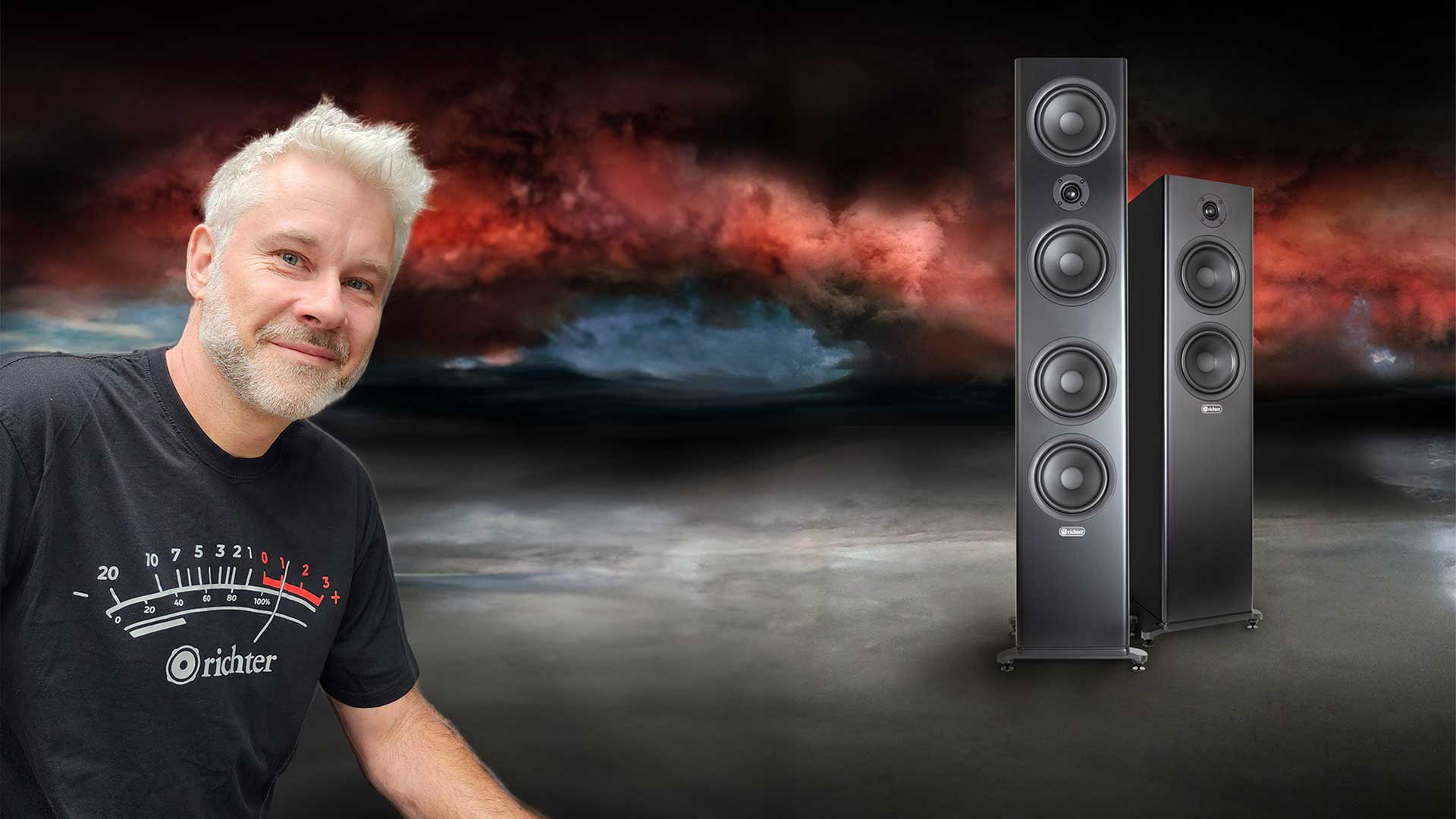
Legendary Australian speaker company Richter is this year celebrating its 35th anniversary, and fans of their speakers can all celebrate with them, thanks
to some hard yards in design and development finally delivering two Series 6 ‘Special Editions’ – one a super-black souped-up Wizard, the other a new flagship, recalling a past classic floorstanding design: the Excalibur.
“It seemed fitting since it’s just over 25 years since the last Excalibur,” Richter’s Managing Director Brian Rodgers tells us. The Excalibur was the biggest production Richter speaker back in 1996 – “although there were other models that never really went to production, like the ‘Secret Weapon’,” noted Rodgers.
The new Excaliburs stand 115cm high on their S6 stabilisers, their volume some 28 per cent greater than the Wizards which, together with the Excalibur’s additional drivers, significantly extends the bass performance, especially as the new Excaliburs boast improved drivers over the standard Series 6 range: a new more efficient and more sensitive 25mm soft-dome tweeter, and newly revised 165mm (6.5-inch) SE drivers.
They also boast ‘Special Edition Black’, a new higher-quality two-tone finish with a matte black front baffle and high gloss black cabinet body.
To get the full design story on the new speakers, we invited Dr Martin Gosnell, Richter’s chief designer (pictured above and below), to talk us through the new design from tip to toe.
So why has Richter gone bigger, and why now?
“We really wanted to make something remarkable and ‘next level’,” he says, admitting that Richter has held off on building a new Excalibur for years – “because it had to be a very special result when finally ‘the sword was pulled from the rock!’
The latest hi-fi, home cinema and tech news, reviews, buying advice and deals, direct to your inbox.
"So that was the urge – to build what we believed was expected by our customers for the next release of Excalibur after such a long wait.”
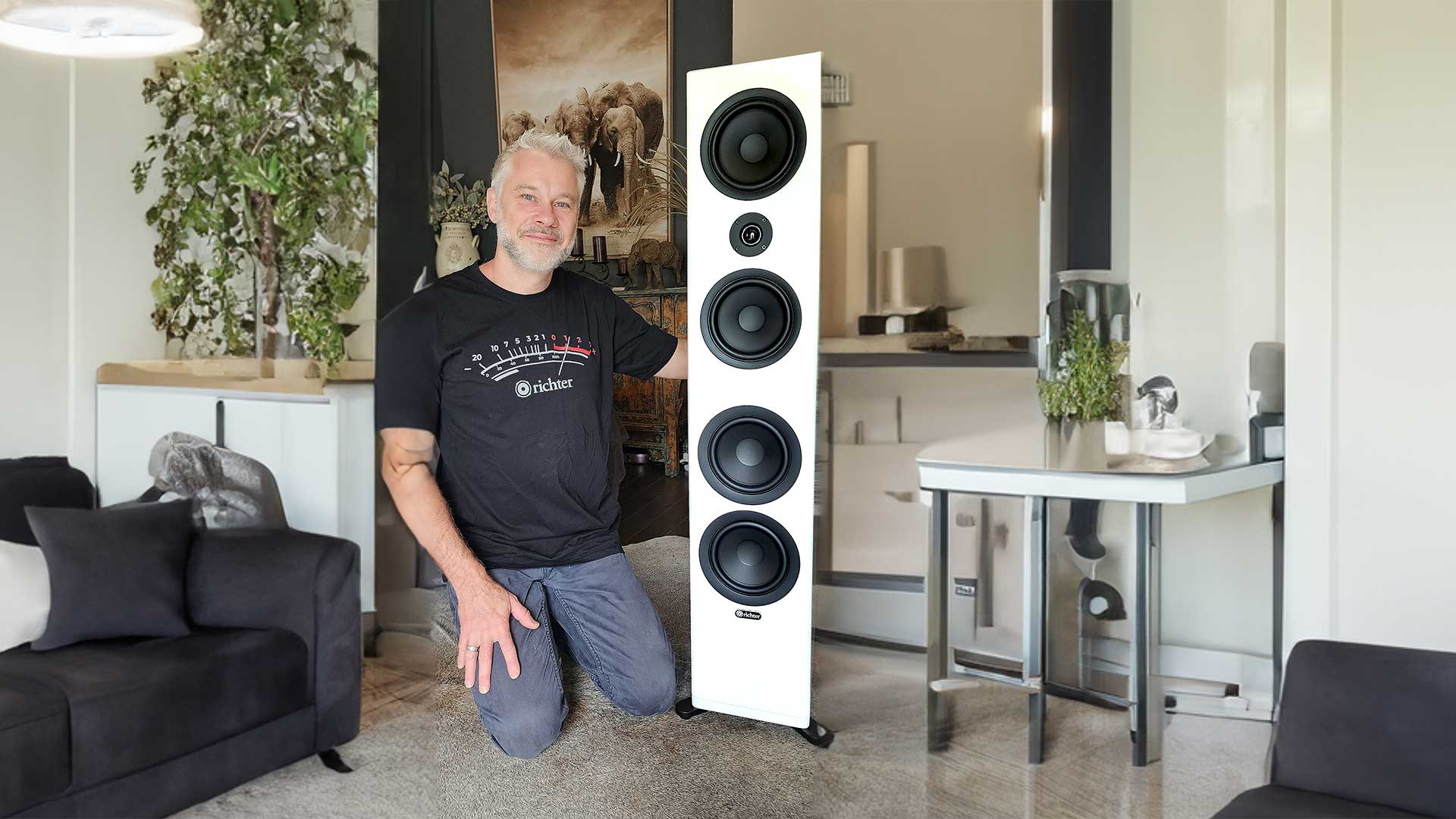
Rethinking the equation

This review originally appeared in Audio Esoterica magazine, one of What Hi-Fi?’s Australian sister publications, available in print and digital editions Click here for for a Readly special offer, including access to Audio Esoterica's digital editions.
AUDIO ESOTERICA: Was it primarily a case of scaling up the existing Richter models?
DR MARTIN GOSNELL: That would have been easier! We certainly wanted something aligned with the Richter sound signature, the hub of Richter’s popularity. But we didn’t want to just scale things up a bit, or add to a previous design. We wanted an awe-inspiring result, engineered to smash through to new heights. And that meant starting largely from scratch.
AE: So if you’ve been thinking about it for years, you already had some ideas?
MG: Over the years I’ve built many large custom speakers and subwoofers – purely for the joy of it. So yes, after decades of optimisation I had a clear design vector.
But such a flagship model meant rethinking every aspect of the sonic performance, as well as build quality, presentation and finish. And the story began with the bottom end – the bass.
What we wanted were unprecedentedly clean levels and engaging dynamics, but also tunability – a speaker that had the potential to work in the largest of listening rooms, but which could also be enjoyed to the full in more modest environments. We wanted a bottom-end capable of satisfying those who love their live stage performances, electronic music, and movies, but with a new sense of transient awareness keeping the sound refreshing and non-fatiguing in a range of listening environments, which is historically the loudspeaker designer’s Achilles heel.
A performance like that was going to require a larger and more solid cabinet, and after considerable persuasion and negotiation, we agreed on a cabinet with enough capacity to move the air.
But more volume alone was not going to cut the mustard. The bass performance was going to hinge on the combination of two quite differently tuned bass systems, using very different optimised drivers – one system for low-frequency depth, the other for clean transient performance at all volume levels.
The lower bass chamber is double the volume of the upper chamber and tuned for a roll-off about one half-octave lower than the upper bass-mid chamber, with a response alignment optimised for frequency extension.
The upper chamber houses the bass/mid drivers, and its response, while having less extension, is optimised for a faster, more transient response, with less demand on driver cone excursion. The parameters are largely optimised for typical bass-midrange frequencies.
In combination, the two separate optimised bass systems produce an extended bass shelf response – fast and dynamic but with a room-filling warmth and ground-shaking effect when required. There’s a transient pedigree able to make you jump from the jolt of a slammed car door slammed, or to feel bullets in Top Gun: Maverick hit you hard in the chest, while the bottom bass drivers provide a new bass/sub-bass depth and quality not typically achieved even using a separate subwoofer. We think it sets a new standard never before perceived in a Richter loudspeaker — and I suspect in any loudspeaker at this price point.
AE: Do the two separate bass systems make the speaker harder to drive?
MG: No, easier – because the total electrical impedance of the combined systems flattens out considerably. Your readers may be familiar with the typical bass-reflex double peak at low frequencies, which may present a difficult reactive load to the amplifier. Now imagine summing two such response curves but shifting one of those responses so that the peaks and troughs overlap – you’ve flattened out the response. It’s much more like a resistive load, and much easier to drive.
AE: And the two bass systems are why you have not two but four tuning plugs?
MG: Yes, the two bass chambers are completely isolated from each other and each has its own large-diameter [approximately 90mm] contoured reflex vents, avoiding chuffing and turbulence artefacts.
So there are four rear partial flow vent tuning plugs available. These open-cell plugs reduce the velocity of airflow through any of the four bass vents, allowing the bass to be tailored to suit small or large, reflective or absorbent rooms. They give a wide range of tuning and room-matching options.
The net result is that the drivers balance out well at high power in terms of cone excursion, with the lower chamber and drivers producing waves of floor-rippling ambience, and the upper drivers providing a clean tight punch.
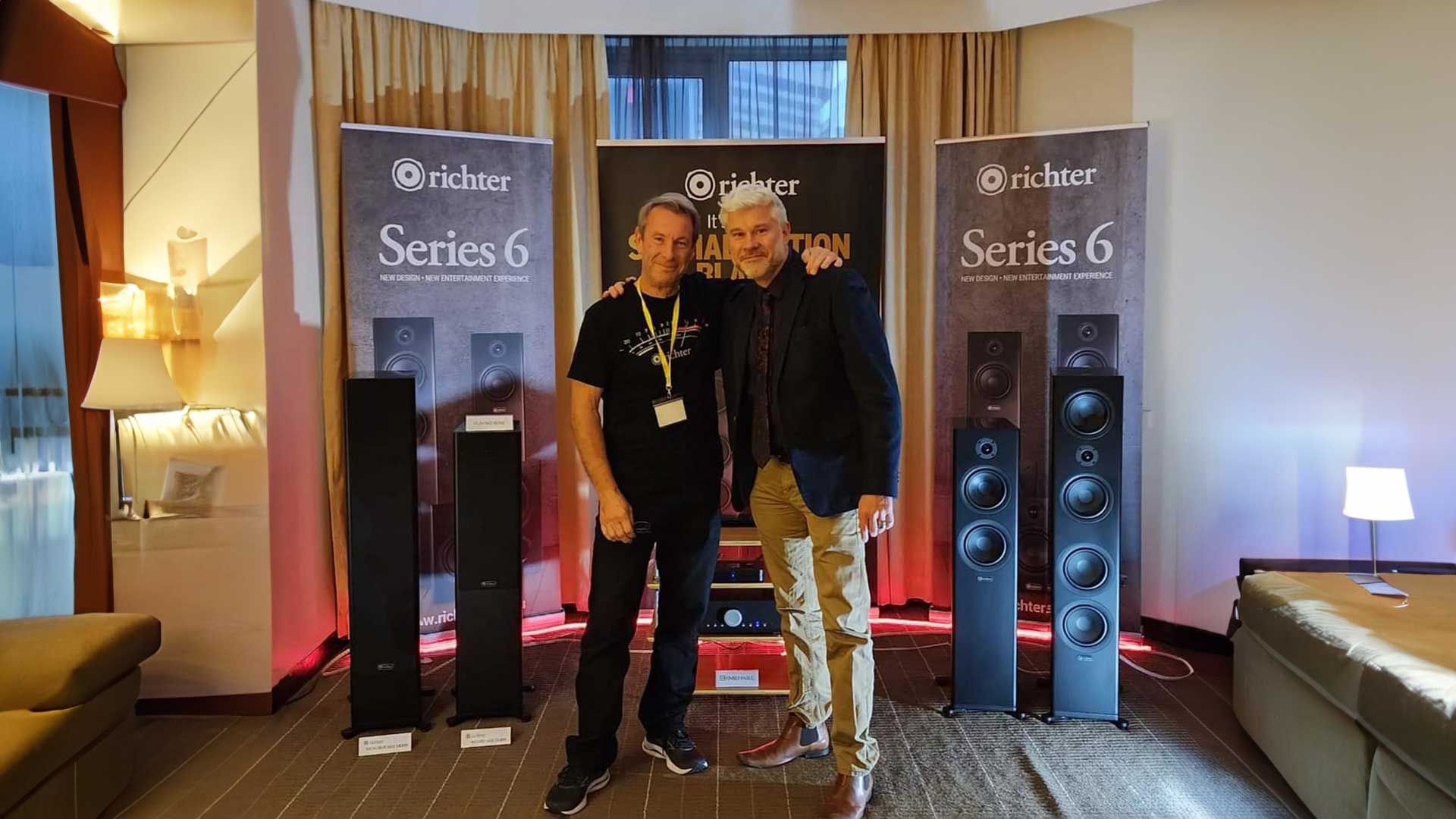
New size, new drivers
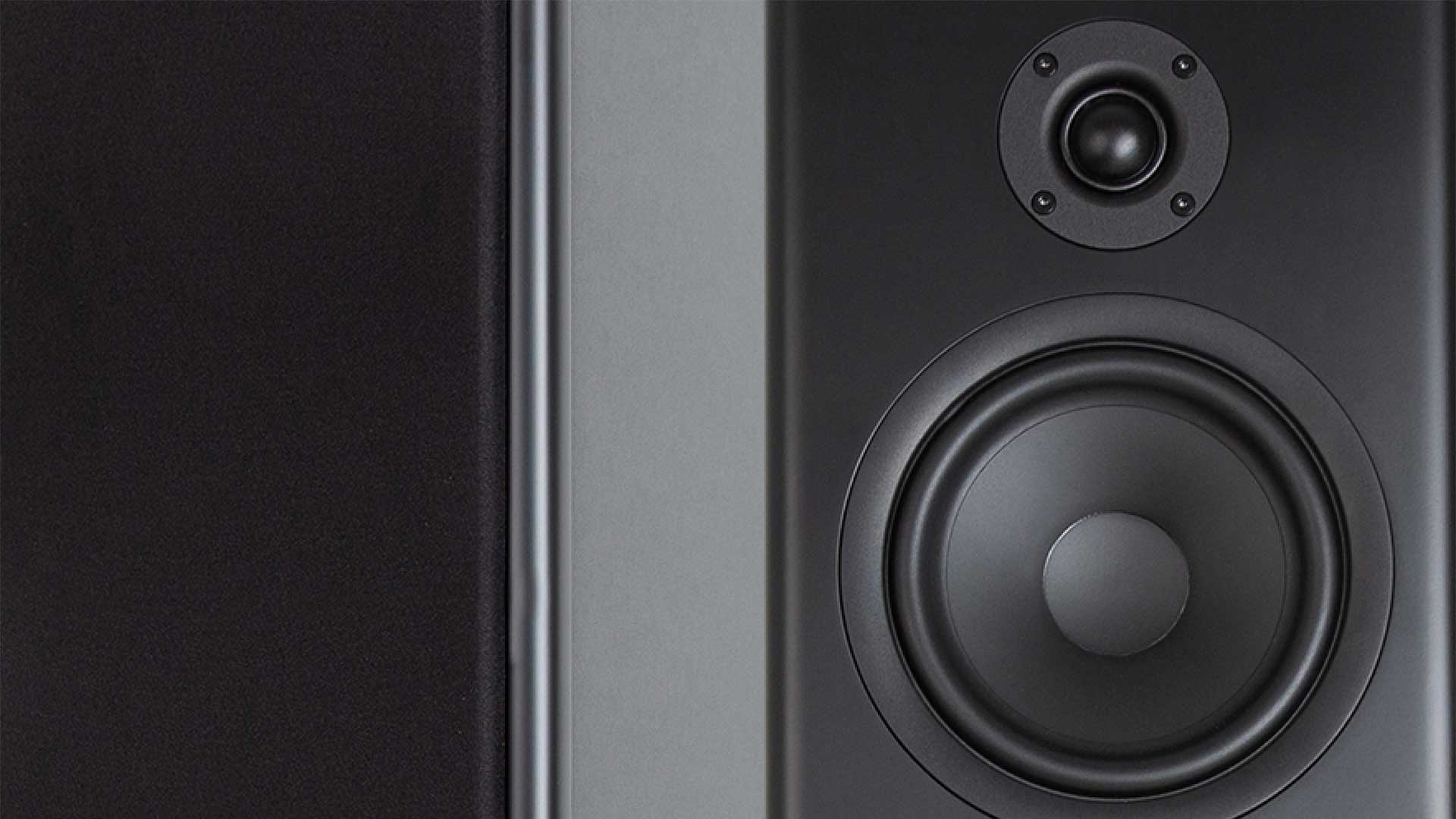
Price: $5899 / pr
Type: quasi 4-way bass reflex
Drivers: 25mm soft-dome neo tweeter, 2 × 165mm composite paper cone, 2 × 165mm high-power composite paper cone
Quoted frequency response: 22Hz-30kHz (-6dB)
Sensitivity: 92dB (2.83Vrms, 1m on axis)
Nominal impedance: 4 ohms (minimum 2.5 ohms)
Dimensions (HWD): 1150 × 221 × 400mm (w/o grille/stabilisers)
Weight: 35.3kg each
AE: These are ‘SE’ versions of Richter’s 6.5-inch drivers. What’s different?
MG: They’re specifically designed to handle considerably more cone excursion. Excursion goes up by a factor of four for every octave we go lower, so if you want uninhibited clean bass it pays to design your lower extension bass system drivers with greater linear excursion.
Linear excursion is typically 6-7mm in a good six-inch driver such as the bass-mids we use in the upper chamber for fast transients and also midrange. For the lower system, tuned half an octave lower, we wanted to develop a driver capable of twice that much excursion, around 15mm. This meant trying to achieve a driver design with the Thiele-Small parameters we required, but also a much larger and heavier voice coil.
And to compensate for the fact that much of the voice coil is then outside the magnetic gap, it would need a much more powerful magnetic flux density without compromising gap tolerances and reliability. That was achieved using a significantly larger double magnet configuration and a geometrically tailored pole piece. It’s a larger moving mass, but the quality factor and resonant frequency of the driver is restored by the significantly more powerful magnetic field.
They are like six-inch subwoofers but with the finesse of a woofer! It took three prototyped versions to get it right.
The bass/mid drivers, being tuned to a higher roll-off, do not have this excursion demand and are tailored for bass-mid performance, with a more typical ~7mm linear excursion and much lighter moving mass.
They represent Richter’s best-ever and much-adored midrange clarity and precision, and these are used for the Wizard Mk6 SE midrange.
AE: So with separately-tuned enclosures, the Excalibur S6SE is a quasi-four-way?
MG: That’s correct, but the crossover is stunningly minimalist – effectively only nine components are used. Inductors are all large air-core, except for the very lowest bass driver which employs a huge laminated iron core. The remaining components are a few large polypropylene capacitors, thick interconnecting cable, soldered joints and 10W resistors. Close to the finish line and after months of tweaking we made final adjustments to allow the removal of some of the shunt components that had crept in during tweaking, and we were there.
AE: With all this bass and midrange energy, was it an issue to find a tweeter up to the job?
MG: This became quite a significant challenge in terms of the power handling and sensitivity that were necessary to match the levels produced by the double bass/mid symmetrical array. We experimented with multi-tweeter arrays for which we designed several custom, 3D-printed, multi-drive horns, including an impressive multi-angle tri-tweeter device.
Some of the designs had brilliant performance and would have been ideally suited to home theatre. But we really wanted a single point-source approach for the Excaliburs, if possible, aligned with the notion of phase accuracy and off-axis stability. The tweeter we developed finally was a 25mm silk-dome, six ohms [nominal impedance], and extending to 30kHz with a slight lift in response from about 7kHz up to 15kHz on axis for a psychoacoustic impression of clarity and speed, and flattest at 15 degrees off-axis. Most importantly it has a low resonance of about 700Hz, presenting no challenges when crossed over almost two octaves higher at 2.5kHz, so avoiding resonance-induced distortions.
It’s a beautifully behaved tweeter sonically, as high-volume listening positively attests to – sweet even at high levels on very demanding material – and requiring only three crossover components. It’s a match for all the effort we put into every other aspect of our brain-child.
AE: What do you think has been the secret of Richter’s success over the years?
MG: Well, for starters Brian and I don’t make loudspeakers that we wouldn’t
want in our own homes. I have Richters in my offices, lab, workshop and home theatre room. Overall the goal can be summed up in one word: ‘engagement’. If a loudspeaker engages the listener with a desire to listen more, for longer, to rediscover favourites and deliver surprise and excitement in enjoying music they never thought they’d spend time listening to, then we’ve achieved our goal.
And when we say ‘engagement’, the speaker needs to be engaging not just at first, but hours into the listening session. Richter’s product philosophy is about entertainment, not a preconceived intent to optimise accuracy or some other technical specification. If 30 years of designing speakers has taught me anything it’s that technical paradigms need to be weighted with respect to the user’s experience and environment.
I had an example of this recently with the Excaliburs. I really don’t have favourite musical genres personally – in fact, at age 56 my tastes are still diverging. One example is Billie Eilish, whose music I had never quite understood, perhaps because I only ever heard it in the car, and even though that’s an $80k motor with an eight-speaker sound system, the bass always sounded – well, frankly ridiculous – overblown and dominating to the point that I criticised the production.
However, on the Excaliburs I can appreciate what such modern-engineered music can invoke emotionally, and hear the subtle frequency drops on the lower fringe of human hearing.
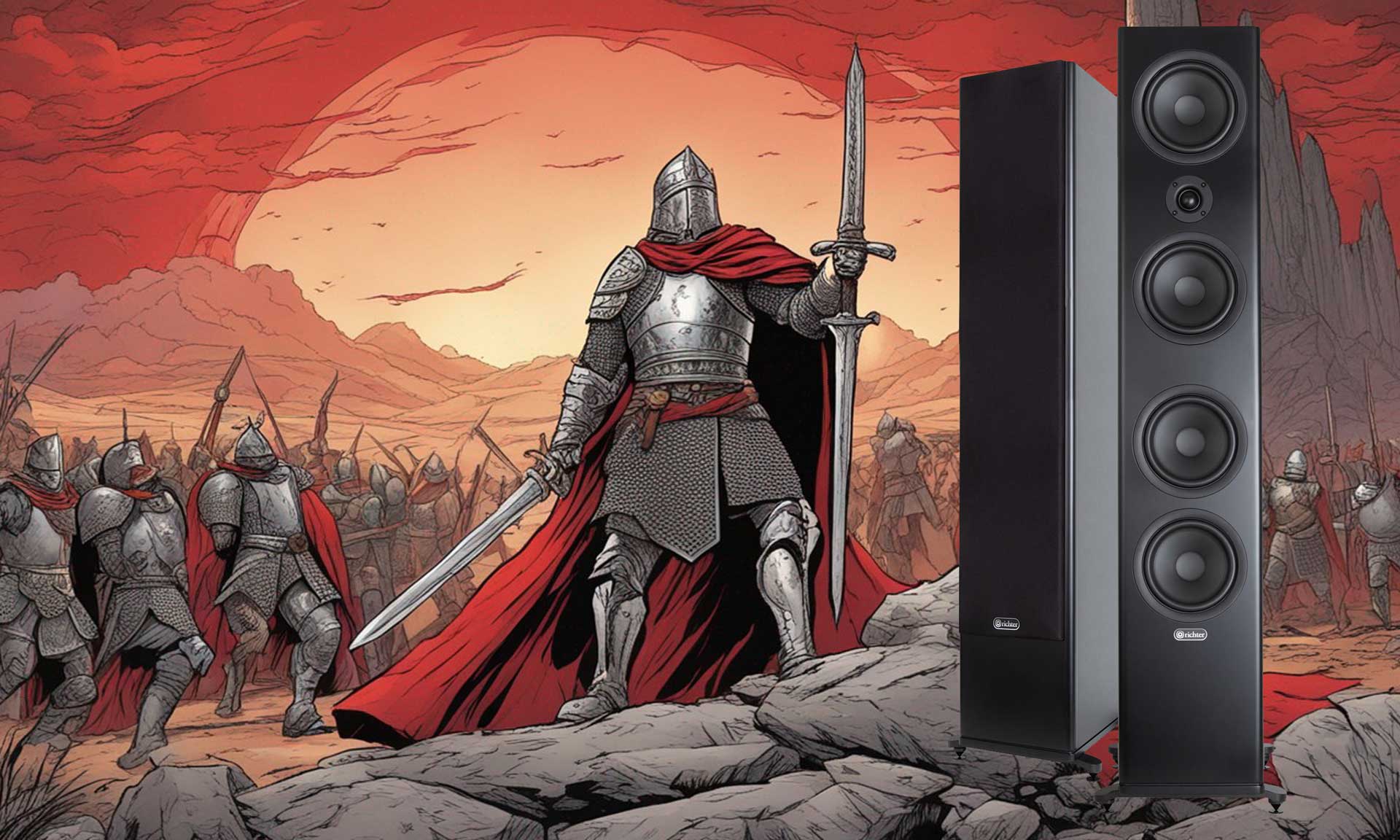
AE: Are you pleased with the initial reaction to the Excaliburs?
MG: Oh yes. And I can give you two examples from their development. One is in the electronic space – I recently spent considerable time with a drum-and-bass DJ, initially using D&B’s outrageously full spectrum and demanding dynamics to do specific performance and power handling tests on the Excaliburs.
The DJ, Jason, had never really explored his material on speakers smaller than large refrigerators, and he was frankly stunned that a commercial hi-fi speaker was able to reproduce his favourites (AC13, Awake) with dynamics greatly exceeding his expectations, and he could identify at least three different drum kits within the barrage of rich sonic texture with such clarity that he claimed to be able to identify the brands and models.
This was another example of learning about a new genre. One thing I love about music is that it usually only takes some time spent with an enthusiast of a new genre and listening to some well-engineered examples to open a new door of experience and enjoyment.
Another interesting experience was with music enthusiast Christina, an elderly person who auditioned the loudspeaker while we were putting the final touches on the design. When she saw the physical size of the speakers she was a little apprehensive – she had recently been suffering from chronic migraine headaches and explained that she couldn’t handle loud noise.
We started with some rumbling lows from Leonard Cohen, first at low volume but raised as we saw Christina starting to toe-tap. We moved on to Rickie Lee Jones, Patricia Barber, Simply Red. I nudged my 500W Dussun V8i “hyper class A” power amplifier to about half volume, and Christina just sat there soaking it in, completely unperturbed by the high volume levels we had reached, looking my way, smiling and shaking her head in satisfied disbelief.
At one point between tracks, she looked at me and said, “This is simply amazing. I can tell this is very loud but I don’t feel the need to turn it down. I’ve never experienced this: even this loud it is really comfortable and enjoyable.”
AE: Are you using Excaliburs at home?
MG: I am, and actually that’s another story, because more than 10 years ago I built my wife, Rachelle, a very large set of custom speakers – five six-inch bass/mids and double-dome tweeters. The sound they produce is hugely immersive, and they’ve been in our system ever – neither my wife nor I would have ever parted with them. I think that satisfying Rachelle’s love of that huge sound actually became a key component when dreaming about the final Excalibur SE design.
I’m pleased to say she has embraced the new Excaliburs over those custom speakers, and in fact we’ve now sold them – only 18 hours after mentioning they were available on social media! The Excaliburs are a cherished main component of our home now.
And I think one of the most satisfying aspects of this design has been that the concept just worked. From the fundamental idea and running simulations two years prior, most aspects of the design didn’t change during development, and the bass cabinet tuning and resulting dynamics are very close to the original simulations. I guess that had to happen after 30 years of loudspeaker building!
It’s almost 25 years since I took over designing Richter products after Ralph Waters, who had started Richter 12 years before that. My view of the future is extremely positive. As a scientist and engineer, for me Richter is a wonderful channel for my artistic side, my passion and love of music, and Brian is a simply marvellous gentleman to work with, with a wealth of electronics manufacturing experience. We have a wonderful working synergy, an intensely creative amalgamation of late-night listening sessions, product conceptualising, and ideas for the future. While it’s been extremely tough in this industry for some time, I know there are more great things coming – better than ever.
Australian Hi-Fi is one of What Hi-Fi?’s sister titles from Down Under and Australia’s longest-running and most successful hi-fi magazines, having been in continuous publication since 1969. Now edited by What Hi-Fi?'s Becky Roberts, every issue is packed with authoritative reviews of hi-fi equipment ranging from portables to state-of-the-art audiophile systems (and everything in between), information on new product launches, and ‘how-to’ articles to help you get the best quality sound for your home.
Click here for more information about Australian Hi-Fi, including links to buy individual digital editions and details on how best to subscribe.
- Jez FordEditor, Sound+Image magazine

